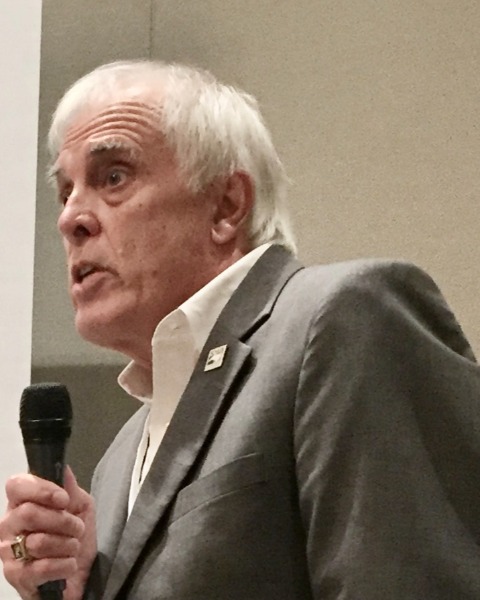Back
Diversification of Transportation
Future Urban Form: Driven by Autonomous Vehicles
Sunday, April 2, 2023
2:00 PM – 2:15 PM CDT
Location: 113A
CM | .25
Division Endorsement: Transportation Planning Division

Roger S. Waldon, FAICP
Senior Consultant
Clarion Associates
Cornelius, NC
Moderator and Speaker(s)
Autonomous vehicles (AV) are a game-changer for urban form. We will be surrounded by driverless vehicles in the shockingly near future. Planners need to lead by anticipating lifestyle changes, promoting creative thinking, and brushing off criticism.
Existing traffic management systems are likely to be dramatically disrupted. State and local governments need to learn, soon, how regulations regarding rules and penalties for using public streets and roads must be adjusted.
Questions abound. Who gets the citation for a speeding violation or failure to adequately stop at a stop sign? What licensing is required? Who is responsible in the event of an accident? What levels of inspection are appropriate for navigating systems? How can governments take advantage of these technologies to make land-use patterns and services more efficient? What opportunities exist for service-delivery improvements or enhanced emergency response systems?
This presentation reviews the current understanding of driverless vehicle possibilities and considers ideas for best practices regarding government preparations for this new transportation age. Planners will play a critical role in education and innovative infrastructure designs.
Explore how these new technologies can expand mobility options and offer new opportunities to include transportation-challenged individuals.
Session Resources:
www.planning.org/planning/2015/may/autonomouscars
www.transportation.gov/av/3
https://land8.com/how-autonomous-vehicles-are-influencing-urban-design
https://futurism.com/heres-how-driverless-vehicles-will-utterly-transform-how-our-cities-look
www.nlc.org/resource/autonomous-vehicle-pilots-across-america
NPC Peer Reviewers assigned this presentation a learning level of Intermediate. For more on learning-level descriptions, visit our General Information Page.
Existing traffic management systems are likely to be dramatically disrupted. State and local governments need to learn, soon, how regulations regarding rules and penalties for using public streets and roads must be adjusted.
Questions abound. Who gets the citation for a speeding violation or failure to adequately stop at a stop sign? What licensing is required? Who is responsible in the event of an accident? What levels of inspection are appropriate for navigating systems? How can governments take advantage of these technologies to make land-use patterns and services more efficient? What opportunities exist for service-delivery improvements or enhanced emergency response systems?
This presentation reviews the current understanding of driverless vehicle possibilities and considers ideas for best practices regarding government preparations for this new transportation age. Planners will play a critical role in education and innovative infrastructure designs.
Explore how these new technologies can expand mobility options and offer new opportunities to include transportation-challenged individuals.
Session Resources:
www.planning.org/planning/2015/may/autonomouscars
www.transportation.gov/av/3
https://land8.com/how-autonomous-vehicles-are-influencing-urban-design
https://futurism.com/heres-how-driverless-vehicles-will-utterly-transform-how-our-cities-look
www.nlc.org/resource/autonomous-vehicle-pilots-across-america
NPC Peer Reviewers assigned this presentation a learning level of Intermediate. For more on learning-level descriptions, visit our General Information Page.
Learning Objectives:
- Understand the technology and both the current and future availability of self-driving vehicles.
- Describe current expectations for AV technologies and implementation, and the likely impacts on future urban form.
- Tell the story of planners’ important role in preparing communities for this coming dramatic shift in urban forms.
